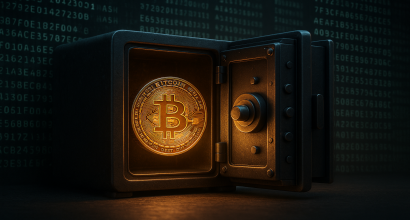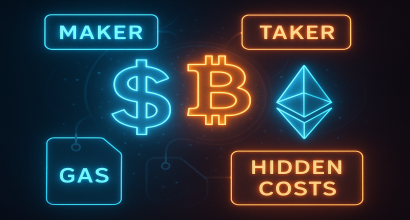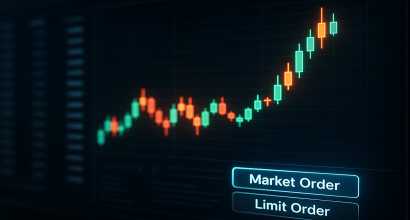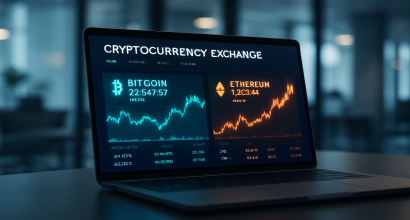Cryptocurrencies have rapidly transformed from a niche technology experiment into a global financial movement. With assets like Bitcoin, Ethereum, and stablecoins entering mainstream portfolios, the role of crypto exchanges has become increasingly critical. These platforms serve as the gateway between the traditional financial world and the blockchain ecosystem.
Whether you are a beginner looking to purchase your first Bitcoin or an experienced trader exploring decentralized finance (DeFi), understanding crypto exchanges is essential. This guide provides a deep dive into their history, mechanics, benefits, challenges, and the innovations shaping their future.
A Brief History of Crypto Exchanges
The first recognized crypto exchange was BitcoinMarket.com, launched in 2010. It allowed early adopters to trade Bitcoin for U.S. dollars when the price of BTC was less than $1.
Since then, exchanges have evolved in several waves:
-
Early centralized platforms (2010–2013): Basic websites with minimal regulation and limited security. Mt. Gox, the most famous of this era, eventually collapsed due to a massive hack.
-
Regulated centralized exchanges (2014–2017): Companies like Coinbase, Kraken, and Bitstamp introduced stricter compliance and better user experience.
-
The ICO boom (2017): Binance and Huobi rose to dominance, listing hundreds of new altcoins during the Initial Coin Offering frenzy.
-
The DeFi era (2020–present): Decentralized exchanges (DEXs) like Uniswap and PancakeSwap popularized peer-to-peer trading through liquidity pools.
This evolution highlights a clear trend: as demand grows, exchanges adapt to offer more security, transparency, and innovative services.
How Do Crypto Exchanges Work?
At their core, exchanges function as marketplaces, connecting buyers and sellers of digital assets. Let’s break down the process:
-
Account Setup & Verification:
Users create an account, provide identification (KYC), and secure access with two-factor authentication. -
Funding the Account:
-
Deposit fiat via bank transfers, credit cards, or third-party payment systems.
-
Deposit crypto from external wallets, ensuring correct network selection.
-
-
Trading Mechanics:
-
Order Book System: Matches buy and sell orders using a matching engine.
-
Liquidity Pools (DEXs): Automated smart contracts pool user funds to facilitate trading.
-
-
Settlement:
Once a trade executes, balances update instantly in the exchange ledger. For withdrawals, assets are transferred on-chain, often with associated fees.
Types of Crypto Exchanges
1. Centralized Exchanges (CEX)
These are company-run platforms such as Binance, Coinbase, and Kraken.
-
✅ Pros: High liquidity, fiat support, strong security, insurance options.
-
❌ Cons: Custodial risk, regulatory exposure.
2. Decentralized Exchanges (DEX)
Built on blockchain smart contracts, DEXs like Uniswap eliminate intermediaries.
-
✅ Pros: Non-custodial, higher privacy, global accessibility.
-
❌ Cons: Slower adoption, higher learning curve, gas fees.
3. Peer-to-Peer (P2P) Exchanges
Platforms where buyers and sellers negotiate directly, often with escrow protection.
-
✅ Pros: Local payment options, privacy.
-
❌ Cons: Higher risk of scams, slower trades.
Key Features to Consider When Choosing an Exchange
Not all platforms are equal. Evaluate carefully based on:
-
Security: Cold storage, multi-signature wallets, and proof-of-reserves audits.
-
Liquidity: High trading volume reduces slippage.
-
User Interface: Beginner-friendly design vs. advanced trading dashboards.
-
Supported Assets: Major coins vs. long-tail altcoins.
-
Fees: Maker/taker fees, deposit/withdrawal costs, network gas charges.
-
Reputation: Independent audits, user reviews, and regulatory licenses.
Benefits of Using Crypto Exchanges
-
Accessibility: Trade anytime, anywhere with just an internet connection.
-
Diversity: Access to thousands of cryptocurrencies, from Bitcoin to niche tokens.
-
Advanced Tools: Charts, APIs, derivatives, margin trading.
-
Liquidity: Easy entry and exit from positions without waiting days for settlement.
-
Ecosystem Services: Many exchanges now provide staking, lending, and NFT marketplaces.
Risks and Challenges
1. Market Volatility
Crypto prices can swing by double-digit percentages in a single day. Beginners must be prepared for rapid changes.
2. Security Threats
Despite strong defenses, hacks remain a persistent threat. Mt. Gox and more recently FTX highlight custodial risk.
3. Regulatory Uncertainty
Countries differ in how they treat crypto. Some, like the U.S., require strict KYC/AML compliance, while others remain unclear.
4. User Mistakes
Sending funds to the wrong blockchain network or forgetting withdrawal memos can result in permanent loss.
The Future of Crypto Exchanges
-
Proof-of-Reserves:
Growing demand for transparent solvency audits will push exchanges to adopt verifiable cryptographic methods. -
Integration with Traditional Finance:
Expect more collaborations with banks, fintech apps, and even governments launching central bank digital currencies (CBDCs). -
Decentralization & Hybrid Models:
Future platforms may merge CEX liquidity with DEX transparency, creating hybrid exchanges that offer both ease-of-use and trustlessness. -
AI and Automation:
AI-driven trading bots, predictive analytics, and automated compliance will make exchanges smarter and safer.
Tips for Beginners
-
Start small and learn the basics before committing larger capital.
-
Always enable 2FA and consider a hardware wallet for storage.
-
Diversify between multiple exchanges to reduce custodial risk.
-
Keep up with global news, as regulations and partnerships can affect markets.
Conclusion
Crypto exchanges are the beating heart of the digital asset economy. From early days of Mt. Gox to today’s decentralized platforms, they continue to evolve, balancing convenience, security, and innovation.
For users, the challenge is to select wisely—choosing exchanges that match their risk appetite, security needs, and trading goals. As blockchain technology matures, exchanges will likely become more regulated, transparent, and integrated with mainstream finance.
By understanding their history, mechanics, risks, and future direction, you position yourself not just as a trader, but as an informed participant in the next evolution of money.



















Discussion & Comments